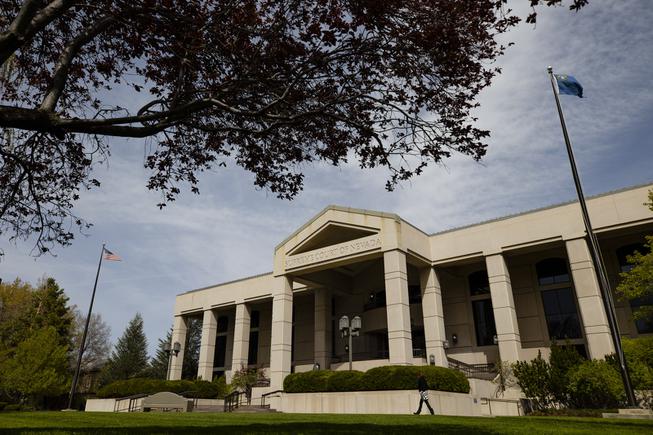Thursday, Aug. 17, 2023 | 2 a.m.
The Nevada Supreme Court is weighing arguments in five consolidated civil cases in which the ruling could have far-reaching consequences for groundwater management throughout the state and the future of a vulnerable local fish.
The Nevada Division of Water Resources’ state engineer’s office has appealed a 2022 decision in Clark County District Court to strike limits it placed on groundwater pumping, to 8,000 acre-feet annually or less, in the Lower White River Flow System, a system of basins in Clark and Lincoln counties. The basin is northeast of Las Vegas and includes Coyote Springs Valley, Muddy River Springs Area, California Wash, Hidden Valley, Garnet Valley and part of the Black Mountains Area, according to the state engineer’s office. Surface water throughout the basin comes from springs, some of which provide the Moapa dace fish with their only home on Earth in the Muddy River, and which flow into Lake Mead.
The state engineer’s order had canceled permits for several different groundwater pumping projects and said the whole flow system wasjust one large basin. Lincoln County Water District and several stakeholders who’d been granted water rights before the order, successfully sued the Nevada Department of Conservation and Natural Resources, the Division of Water Resources and the state engineer. Additionally, the Center for Biological Diversity sued to protect the Moapa dace, which has been classified by the U.S. government as an endangered species. The defendants appealed the Clark County decisions, and last summer, the five cases were consolidated for appeals. Attorneys presented arguments for both sides before the Nevada Supreme Court on Aug. 8.
State attorney Jeffrey Conner, representing the engineer’s office, argued his client’s order didn’t reprioritize any of the water rights held in the basin.
“There is no pump cap; all this order does is identify what the state engineer thinks is the threshold for available pumping,” Conner said.
He said the state engineer has other tools besides curtailment.
Kent Robison, attorney for Coyote Springs Investment LLC, the company behind the long-awaited 40,000 acre, 150,000-home development planned for northwest of Moapa said the order, indeed, curtailed water rights.
“We went from most senior to 57th … right where the 8,000-acre-feet cap is,” Robison said.
Robison said the basins were connected, but counting them as one basin was problematic because water rights are affixed to individual basins.
The Center for Biological Diversity sided with the state engineer’s office.
Patrick Donnelly, Great Basin director for the center, said lawmakers needed to take more action on water law so conflicts wouldn’t primarily get settled in court.
“The problem is when rights have been issued that conflict with one another and we don’t have a framework in place to deal with that,” Donnelly said.
Donnelly said former state engineer Tracy Taylor had ordered a test to see how pumping from the proposed Coyote Springs development would impact the Moapa River. The test found that pumping groundwater from anywhere in the system drew down the entire aquifer’s volume and showed impacts within 1,100 square miles of the pumping site.
“The idea was to observe the responses, to help characterize the aquifer,” Donnelly said. “Well, in the words of our hydrologist, what it showed is that the Lower White River Flow System is basically a pond.”
That knowledge came at a price. The springs’ flow has been lower since that test and has not recovered.
“So on the one hand it’s good: Now we know this is an extremely sensitive aquifer and we can’t mess with it or we’ll permanently destroy it,” Donnelly said. “On the other hand, we kind of had to hurt it just to find that out.”
No date has been set for the court to release its decision in the matter.

